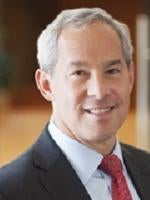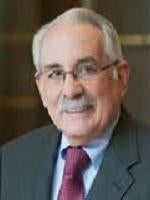SEC Chair Mary Jo White outlined a broad market structure proposal that would require high-frequency traders to register with the SEC as dealers and that could signal the end of the dealer-trader distinction.
In a June 5 speech, Mary Jo White, Chair of the Securities and Exchange Commission (SEC), outlined a broad proposal to address market structure issues in light of the increase in electronic and off-exchange trading in recent years.[1] Among the initiatives outlined in the Market Structure Speech, Chair White indicated that she has asked the SEC staff to prepare a recommendation to the SEC for a rule to clarify that high-frequency traders come within the meaning of the term “dealer” and have to register as such with the SEC.
Although the SEC has yet to formally propose rules in this area, in clarifying that high-frequency traders are “dealers,” the SEC will have to address the “dealer-trader distinction,” a decades-old interpretive framework under which persons who trade for their own accounts with some frequency are not considered “dealers.” Depending on the interpretive framework that the SEC uses to bring high-frequency traders within the dealer definition, the implications to other market participants could be far reaching and could unintentionally eliminate use of the dealer-trader distinction for market participants who are not high-frequency traders. This LawFlash provides an overview of the dealer-trader distinction as well as some of the issues that the SEC will have to consider when bringing high-frequency traders within its regulatory umbrella.
Registration of Brokers and Dealers Under Section 15(a) of the Securities Exchange Act of 1934
By way of background, section 15(a) of the Securities Exchange Act of 1934 (Exchange Act) generally makes it unlawful for any broker or dealer to make use of the mails or any means or instrumentality of interstate commerce to effect any transactions in, or to induce or attempt to induce the purchase or sale of, any security unless (1) such broker or dealer is registered with the SEC; (2) in the case of a natural person, is an associated person of a registered broker-dealer; or (3) satisfies the conditions of an exemption or safe harbor. Although there has been a significant amount of guidance produced (in the form of litigated cases, SEC enforcement actions, and SEC staff interpretations) on what it means to be a “broker,”[2] the interpretive guidance regarding what it means to be a “dealer” has not been as extensive.
Section 3(a)(5)(A) of the Exchange Act, as amended, defines a “dealer” as “any person engaged in the business of buying and selling securities . . . for such person’s own account through a broker or otherwise” (Dealer Definition). Among other exemptions and exclusions,[3] section 3(a)(5)(B) excludes from the Dealer Definition “a person that buys or sells securities . . . for such person’s own account, either individually or in a fiduciary capacity, but not as a part of a regular business.” When these two provisions are read in tandem, it appears that the primary factor for determining whether a person who buys and sells securities for their own account has to register under section 15(a) of the Exchange Act is whether they are engaged in trading as a business. Thus, whether a person is “engaged in the business” of buying and selling securities is at the heart of the dealer-trader distinction.
The Dealer-Trader Distinction
The dealer-trader distinction is an analytical framework that has been in place since at least 1951, when Louis Loss first published his seminal treatise on the securities laws.[4] Although the SEC and its staff articulated features of the dealer-trader distinction over the years,[5] the SEC provided a more comprehensive discussion of the distinction and what it means to be “engaged in the business” of buying and selling securities in 2002.
More specifically, in 2002, the SEC proposed rules to grant banks exceptions and exemptions from the definitions of “broker” and “dealer” as part of the SEC’s implementation of the Gramm-Leach-Bliley Act of 1999.[6] In the 2002 Proposal, the SEC identified activities that historically have been associated with dealers and that would bring someone within the meaning of the phrase “engaged in the business.”7The activities identified by the SEC in the 2002 Proposal include the following:
-
Acting as an underwriter in the distribution of new issues
-
Acting as a market maker or specialist on an organized exchange or trading system
-
Acting as a de facto market maker whereby market professionals or the public look to the person for liquidity
-
Buying and selling securities directly to customers with an assortment of professional market activities, such as providing investment advice, extending credit, lending securities in connection with transactions, and carrying a customer’s securities account[8]
The SEC further elaborated that dealers generally are persons who normally have regular clientele, hold themselves out as willing to buy and sell securities at a regular place of business, have a regular turnover of inventory (or participate in the distribution of new issues), and generally transact a substantial portion of their business with investors (or, in the case of dealers who are market makers, principally trade with other professionals). The SEC contrasted dealer activities with those of traders, who the SEC stated are viewed as
-
having less regular volume;
-
not handling other people’s money or securities;
-
not making a market in securities; and
-
not furnishing dealer-type services, such as providing investment advice, extending credit, or lending securities.[9]
Although the 2002 Proposal is more than a decade old, the SEC affirmed the use of the dealer-trader distinction as an analytical framework when it reiterated the underlying principles of the distinction in connection with the definition of “security-based swap dealer” for purposes of implementing the provisions of the Dodd-Frank Act under the SEC’s purview.[10]
The SEC’s Authority to Require High-Frequency Firms to Register
As we see it, the SEC could face at least three issues in adopting rules or interpretive guidance to bring high-frequency traders within the Dealer Definition: (1) defining high-frequency traders, (2) preserving the dealer-trader distinction for other market participants, and (3) justifying the economics of any proposal.
Defining High-Frequency Trading
The most immediate challenge the SEC will likely face is in defining high-frequency trading and distinguishing such trading from other types of algorithmic and proprietary trading. In this connection, the SEC may seek to build on the framework outlined in a 2010 concept release regarding the structure of the U.S. equities markets, in which the SEC described high-frequency traders as “professional traders acting in a proprietary capacity that engage in strategies that generate a large number of trades on a daily basis.”[11] The SEC then went on to describe certain characteristics associated with high-frequency traders, including the following:
-
The use of extraordinarily high-speed and sophisticated computer programs for generating, routing, and executing orders;
-
The use of co-location services and individual data feeds offered by exchanges and others to minimize network and other types of latencies
-
Very short time frames for establishing and liquidating positions
-
The submission of numerous orders that are canceled shortly after submission
-
Ending the trading day in as close to a flat position as possible (that is, not carrying significant, unhedged positions overnight)[12]
Although the framework for describing high-frequency traders in the Concept Release could be the SEC’s initial starting point, it will have to reconcile the fact that the characteristics that it attributed to high-frequency traders do not neatly correspond to the activities that the SEC previously described as associated with being “engaged in the business” of dealing.
In addition, the SEC could seek to bring high-frequency traders within the Dealer Definition by leveraging its statement in the Concept Release that high-frequency traders, in some instances, have replaced the role traditionally played by market makers.[13] The issue the SEC may face here, however, is that the definition of a “market marker” in section 3(a)(38) of the Exchange Act, in many ways, presupposes a market maker’s dealer status.[14] Further, while the SEC could focus its efforts on the volume of securities transactions effected by high-frequency traders, the SEC would have to reconcile such a test with previous statements made by the staff that the level of a person’s securities activities is not the measure of whether a person is “engaged in the business” of dealing.[15]
Preserving the Dealer-Trader Distinction
Regardless of the vehicle that the SEC uses to bring high-frequency traders within the Dealer Definition, the SEC will likely have to address the continued validity of the dealer-trader distinction. This is especially the case because high-frequency traders are not the only persons who rely on the dealer-trader distinction to avoid having to register as dealers with the SEC. Hedge funds, for example, may use strategies that involve frequently buying and selling securities, but they are not separately required to register as dealers.[16] Day traders are another example of persons whose business it is to buy and sell securities with some frequency, but who typically do not otherwise satisfy the SEC’s identified factors for being “engaged in the business.” In this connection, the SEC will need to apply precision in bringing high-frequency traders within the Dealer Definition while preserving the dealer-trader distinction as an analytical framework for those persons who may not otherwise raise the investor protection or public interest concerns that broker-dealer registration is intended to address. What may make this more challenging for the SEC is its recent endorsement of the dealer-trader distinction as an analytical framework for purposes of the Dodd-Frank Act’s swap-dealer registration requirements.[17]
Economic Justifications
The SEC will have to consider whether it can justify the costs associated with requiring high-frequency traders to register against whatever benefits, real or perceived, such registration would yield. For example, in a recent proposed rulemaking, the SEC estimated the initial cost of registering a broker-dealer to be $275,000, with ongoing yearly costs of $50,000.18 If the SEC’s goal in registering high-frequency traders is intended as a risk management measure, it would have to economically justify doing so in light of other mechanisms at its disposal for such purposes. For example, the SEC could impose additional obligations on the registered broker-dealers that provide high-frequency traders with access to the market, much like the SEC did by adopting Exchange Act Rule 15c3-5.19 If the SEC’s goal is to increase market oversight, it may have to explain why the existing patchwork of regulations that were implemented for these oversight functions do not suffice, such as the large trader reporting rule (i.e., Exchange Act Rule 13H) or the consolidated audit trail rule (i.e., Rule 613 of Regulation NMS).
Further, to the extent that the SEC seeks to justify requiring that high-frequency traders (or at least those that trade via off-exchange venues) also become members of FINRA, the SEC may have to explain why FINRA registration would be consequential, considering that high-frequency traders generally do not have customers and FINRA rules are, in many respects, geared to protect the customers of a broker-dealer.[20]In any event, we note that the quality of a cost-benefit analysis may be just as important as a rule’s substance, especially in light of the decision in Business Roundtable v. SEC, where the U.S. Court of Appeals for the D.C. Circuit struck down a rule because of the SEC’s inadequate consideration of the new rule’s impact on “efficiency, competition, and capital formation.”[21]
If high-frequency traders are required to register as dealers, the other registrants carrying or financing their accounts or providing them with market access may benefit from their ability to allocate roles and responsibilities to the high-frequency traders by agreements and under existing regulations governing clearing and other inter-dealer relationships.[22] It remains to be seen, however, whether a case can be made that increased direct regulation of high-frequency traders will reduce costs and regulatory burdens that are currently (and increasingly) falling on other registrants.
Conclusion
Seeking to require high-frequency traders to register as dealers will likely be part of the SEC’s first volley in addressing the market structure issues surrounding electronic trading, which may be followed by imposing market maker–type obligations on high-frequency traders and requiring membership in FINRA. Although any SEC proposal to require that high-frequency traders register as dealers may be months away, such a proposal would likely require the SEC to develop creative interpretations to withstand any challenges that the SEC did not consider the proposal’s economic impacts or that the proposal does not provide meaningful certainty to persons who are not high-frequency traders regarding their need to register. We will continue to monitor developments in this area closely.
[1]. Mary Jo White, Chair, SEC, Enhancing Our Equity Market Structure, Address before Sandler O’Neill & Partners, L.P. Global Exchange and Brokerage Conference (June 5, 2014) available here [hereinafter Market Structure Speech].
[2]. Section 3(a)(4)(A) of the Exchange Act defines a “broker” as “any person engaged in the business of effecting transactions in securities for the account of others.”
[3]. Under section 3(a)(5)(C) of the Exchange Act, additional exceptions from the Dealer Definition are available to banks (as that term is defined in Section 3(a)(6)) that engage in certain enumerated activities. These exceptions are further codified as Exchange Act Rules 3a5-1, 3a5-2, and 3a5-3. 17 C.F.R. § 240.3a5-1, 3a5-2, and 3a5-3.
[4]. See Louis Loss, Securities Regulation 722 (1st ed. 1951) (discussing dealer-trader distinction). In this connection, we note that the dealer-trader distinction may have been used or developed as an analytical concept within the SEC before the publication of Loss’s treatise, given that Loss held various positions at the SEC during its formative years.
[5]. See, e.g., OTC Derivatives Dealers, Exchange Act Release No. 40594 (Oct. 23, 1998), 63 Fed. Reg. 59,362, 59,370 n.61 (Nov. 3, 1998) (listing dealer indicia in context of over-the-counter [OTC] derivatives dealers); Further Definition of ‘‘Swap Dealer,’’ ‘‘Security-Based Swap Dealer,’’ ‘‘Major Swap Participant,’’ ‘‘Major Security-Based Swap Participant’’ and ‘‘Eligible Contract Participant,’’ Exchange Act Release No. 66868 (Apr. 27, 2012), 77 Fed. Reg. 30,596, 30,607 (May 23, 2012) (discussing dealer-trader distinction in context of security-based swaps); Stephen V. Hart, SEC Staff No-Action Letter (Mar. 6, 1980); Public Securities Locating Services, SEC Staff No-Action Letter (Sept. 8, 1973); United Trust Company, SEC Staff No-Action Letter (Sept. 6, 1978); Continental Grain Company, SEC Staff No-Action Letter (Nov. 6, 1987); Burton Securities, SEC Staff No-Action Letter (Dec. 5, 1977); United States Savings Association of Texas, SEC Staff No-Action Letter (Apr. 12, 1987); Fairfield Trading Corp., SEC Staff No-Action Letter (Jan. 10, 1988); Louis Dreyfus Corp., SEC Staff No-Action Letter (July 23, 1987).
[6]. See Definition of Terms in and Specific Exemption for Banks, Savings Associations, and Savings Banks Under Sections 3(a)(4) and 3(a)(5) of the Securities Exchange Act of 1934, Exchange Act Release No. 46745 (Oct. 30, 2002), 67 Fed. Reg. 67,496, 67,498–500 (Nov. 5, 2002) [hereinafter 2002 Proposal].
[7]. See id.
[8]. See id. In addition to the factors listed in the 2002 Proposal, with respect to dealer status in the context of the Government Securities Act of 1986 (GSA), the SEC staff also identified the following factors: (i) issuing or originating securities that would qualify as securities under the GSA; (ii) participating in a selling group or underwriting government securities; (iii) purchasing or selling government securities as principal from or to customers; (iv) carrying a dealer inventory; (v) quoting a market in government securities or publishing quotes; (vi) advertising or otherwise holding oneself out as a government securities dealer, such as holding oneself out as being willing to buy and sell particular government securities on a continuous basis; (vii) rendering any incidental investment advice; (viii) extending or arranging for the extension of credit to others in connection with government securities; (ix) running a book or repurchase and reverse repurchase agreements on government securities; and (x) using an interdealer broker, other than a retail screen broker, to effect any government securities transactions See, e.g., United Savings Association of Texas, SEC Staff No-Action Letter, supra note 5.
[9]. 2002 Proposal, supra note 6, at 67498–500.
[10]. See Further Definition of ‘‘Swap Dealer,’’ supra note 5.
[11]. Concept Release on Equity Market Structure, Exchange Act Release No. 61358 (Jan. 14, 2010), 75 Fed. Reg. 3594, 3606 (Jan. 21, 2010) [hereinafter Concept Release].
[12]. Id.
[13]. Id. at 3607.
[14]. Section 3(a)(38) of the Exchange Act defines a “market maker” as “any specialist permitted to act as a dealer, any dealer acting in the capacity of block positioner, and any dealer who, with respect to a security, holds himself out (by entering quotations in an inter-dealer communications system or otherwise) as being willing to buy and sell such security for his own account on a regular or continuous basis.” In this connection, however, we note that many firms that engage in high-frequency trading are market makers registered with the SEC as broker-dealers. Although these firms will not be impacted by the SEC’s efforts to bring high-frequency traders within the Dealer Definition, because many of these registered firms rely on Rule 15b9-1 to avoid registration with Financial Industry Regulatory Authority (FINRA), Chair White did indicate in her speech that she is also asking the SEC staff to recommend a “rule eliminating an exception from FINRA membership requirements for dealers that trade in off-exchange venues.” See Market Structure Speech, supra note 1.
[15]. See United Trust Company, SEC Staff No-Action Letter, supra note 5 (“While the volume of such municipal securities activities appears to have been low, the level of a firm’s activities with respect to municipal securities is not the measure of whether it is ‘engaged in the business’ of buying and selling securities for its own account.”).
[16]. See, e.g., Testimony of Richard R. Lindsey, Dir., Div. of Mkt. Regulation, SEC, Concerning Hedge Fund Activities in the U.S. Financial Markets, Before the House Committee on Banking and Financial Services (Oct. 1, 1998); Testimony of Arthur Levitt, Chairman, SEC, Concerning Hedge Fund Activities in the U.S. Financial Markets, Before the House Committee on Banking, Finance and Urban Affairs (Apr. 13, 1994).
[17]. See Exchange Act Release No. 63452 (Dec. 7, 2010), 75 Fed. Reg. 80,174, 80,177 (Dec. 21, 2010) (discussing the dealer-trader distinction in the context of security-based swaps).
[18]. See Crowdfunding, Exchange Act Release No. 70741 (Oct. 23, 2013), 78 Fed. Reg. 66,428, 66,528 (Nov. 5, 2013).
[19]. See Risk Management Controls for Brokers or Dealers with Market Access, Exchange Act Release No. 63241 (Nov. 3, 2010), 75 Fed. Reg. 69,792 (Nov. 15, 2010) (“New Rule 15c3–5 is designed to ensure that broker-dealers appropriately control the risks associated with market access, so as not to jeopardize their own financial condition, that of other market participants, the integrity of trading on the securities markets, and the stability of the financial system.”).
[20]. For example, FINRA Rule 1060(b)(4) specifically excludes broker-dealers from the definition of “customer,” which by extension, makes many FINRA rules inapplicable to dealings between broker-dealers.
[21]. 647 F.3d 1144, 1146 (D.C. Cir. 2011).
[22]. See, e.g., FINRA Rule 4311 (providing for allocation of responsibilities between clearing and correspondent broker-dealers, based on former NYSE Rule 382 and former NASD Rule 3230); Rule 204(d) of Regulation SHO, 17 C.F.R. § 242.204(d) (permitting a clearing participant to reasonably allocate responsibility for closing out fails to deliver to another registered broker-dealer for which the clearing participant provides clearing and/or settlement services); Exchange Act Rule 15c3-5(d)(1), 17 C.F.R. § 240.15c3-5(d)(1) (permitting a broker-dealer providing market access to reasonably allocate control over regulatory risk management controls and supervisory procedures to another registered broker-dealer under specified circumstances).






 />i
/>i
